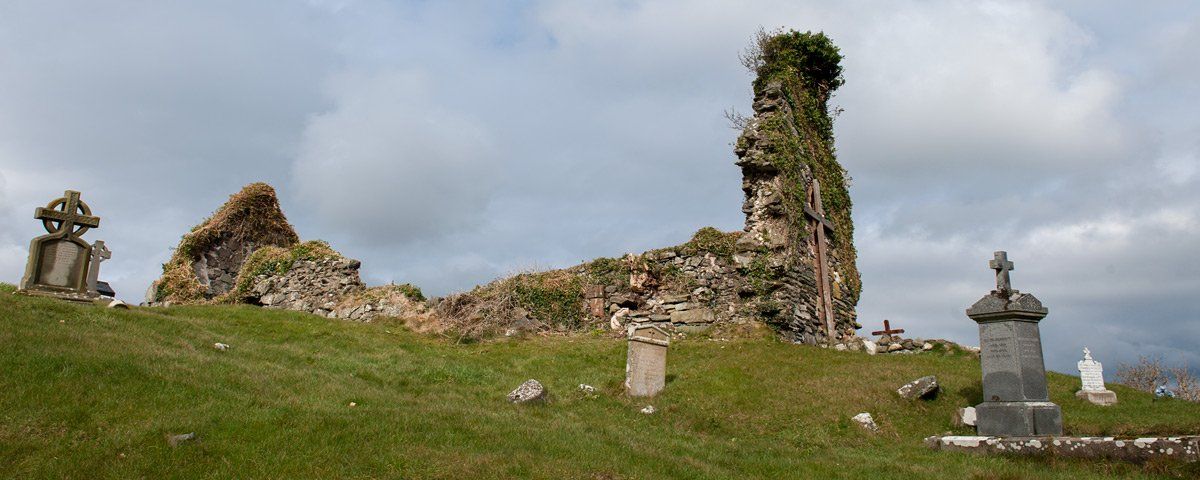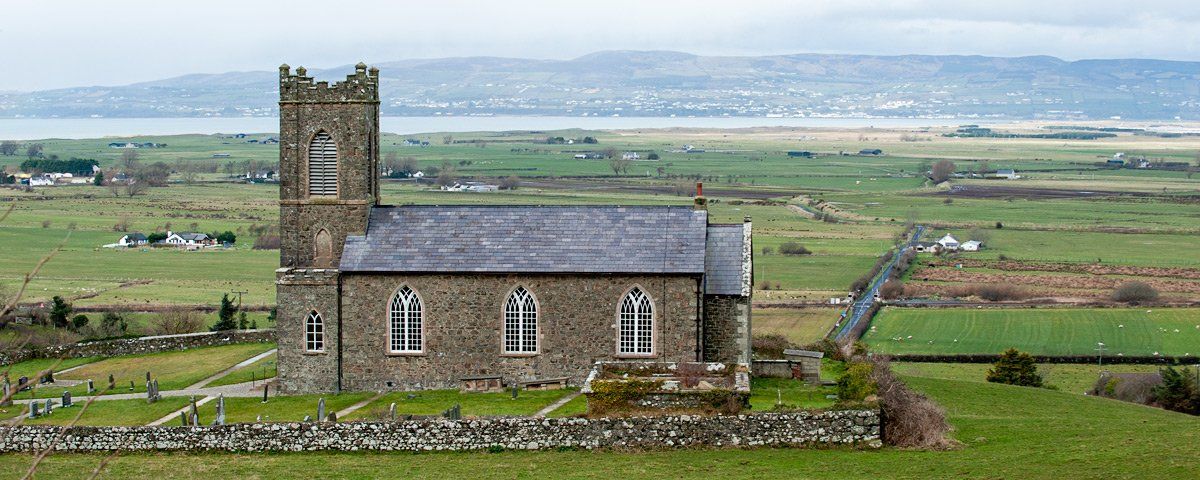Magilligan
The large foreland of Magilligan developed after the last ice age and stretches out into Lough Foyle where a narrow and dangerous tidal channel exists between the Point and Greencastle in Donegal. Sea level would have originally covered this area to a shoreline at the foot of Binevenagh, as the ice cap melted the land slowly rose and Magilligan appeared from below the waves. It is the largest accumulation of sand deposits in Ireland. Benone Strand stretches from below Mussedun Temple at Downhill to Magilligan Point, a distance of over ten kilometres and one of the longest beaches in Ireland which provides excellent walking, it is also used for kite surfing and sand yachting.
Harry Ferguson (Massey Ferguson Tractors) also used the beach to test fly a monoplane he had developed in 1911. Running beside the beach is an ancient dune system which provides a habitat for protected flora and fauna. At the point a car ferry service operates between Magilligan and Greencastle on the Inishowen peninsula in Donegal. To view Magilligan from above follow the Binevenagh Scenic Drive to Gortmore viewpoint on the plateau, the views here are truly breathtaking. At the point you will find a classic example of a Martello Tower which is matched by an identical one at Greencastle, these two were built in 1812 during the Napoleonic Wars to guard the entrance to Londonderry against any possible invasion.
The inspiration for these structures came from an encounter the Royal Navy had at Mortella Point in Corsica in 1794 when they tried unsuccessfully to take one with two naval ships. The shape and thickness made them resistant to cannonballs which deflected off the curvature, a multi-positional mounted cannon on the roof proved to be a very tough defence. Magilligan was used as the baseline measurement during the first large scale mapping of Ireland by the Ordnance Survey in 1827, the baseline was eight miles long and passed through three fixed circular triangulation stations. The work by Major General Thomas Colby achieved the highest level of accuracy at the time. It was remeasured in 1960 using electronic equipment and the new measurements differed from Major Colby's by only 1 inch.
At the foot of Binevenagh mountain and on the Binevenagh Scenic Drive is St Aidan’s Church. The site dates to pre Christian times. St Columba founded a monastery here in 580 AD, after his death a shrine developed here and people travel from all over Ireland to visit it. St Aidan himself was born in Ireland and followed St Columba to Iona where he served as a monk, he then went to England and founded the first monastic settlement at Lindisfarne where he became the first Bishop. St. Aidan died at Lindisfarne in 651 AD and was succeeded by St Finan who in turn was succeeded by St. Colman. It was one of these two who brought the remains of St. Aidan from Lindisfarne back to Magilligan and buried them in a corbel tomb which stands today at St. Aidan’s Church.
The area of Magilligan has a long association with music, one of Ireland's great harpist, Denis Hampsey who was born at Craigmore, Garvagh in 1695, grew up at Magilligan. Despite contracting smallpox and losing his sight at the age of three, Denis went on to become one of the most notable Irish harpists. He lived remarkably in three centuries, passing away in 1807 at the age of 112 and is buried in St.Aidan’s. Denis made a living from playing music to people of all classes and travelled widely to do so. In 1745 he played for Bonny Prince Charles in Edinburgh, he also became a friend of Frederick Hervey who later became the Bishop of Derry and resided at Downhill Palace.
In 1792, he took part in the Belfast Harp Festival as one of ten invited harpists, six of these harpists were blind. It was here he met and became friends with Edward Bunting, the organist at St George's Church and later St. Anne's Cathedral. Bunting was a collector and publisher of Irish melodies. Because of his age, Denis created a living musical link from the ancient to the modern, he played in the old style with long fingernails, his passion for music rose above religious, class and political division. The harp he once played is now exhibited in the Guinness Brewery, Dublin. You can walk from St. Aidan’s through deciduous and coniferous woodlands to the scree slopes below Binevenagh, an Area of Special Scientific Interest (ASSI) covering some 70 hectares.






